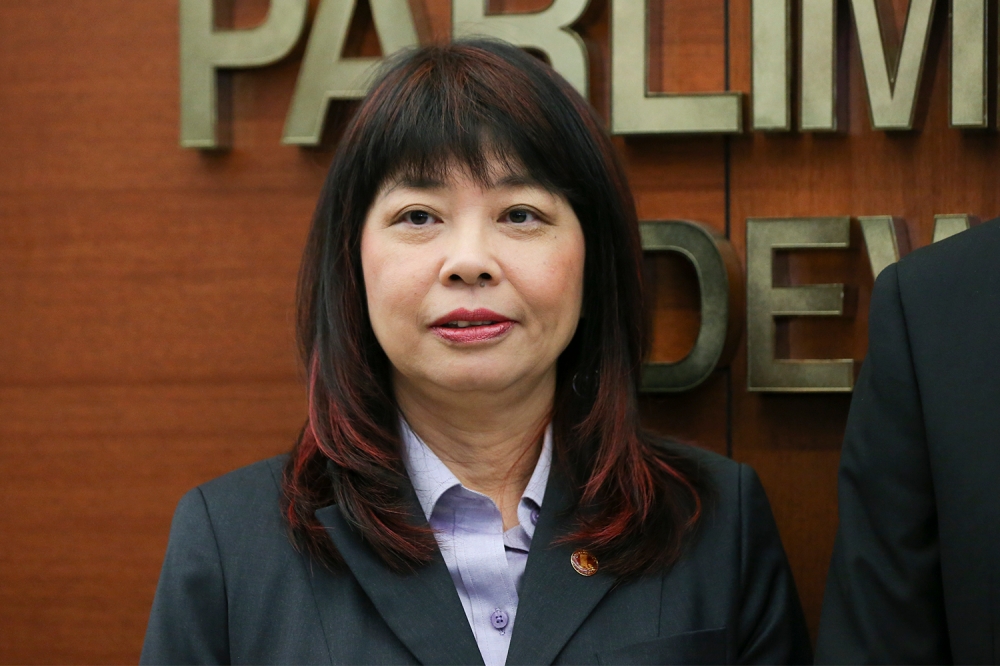APRIL 5 ― Despite Malaysia's progression into the year 2023, the dire issue of a shortage of qualified educators continues to plague the country's educational landscape, and it remains a challenge yet to be effectively mitigated.
Deputy Education Minister Lim Hui Ying told the Dewan Rakyat on March 30 the subjects experiencing a shortage of teachers are English, History, Special Education, Islamic Education, and Information and Communication Technology at the primary school level.
At the secondary school level, subjects such as Malay, English, Special Education, Islamic Education, and Design and Technology are also showing a shortage of teachers.

This issue is not new. Despite previous attempts to resolve this problem, the actions taken thus far have proven to be insufficient.
The gravity of the teacher shortage is particularly severe in Sabah and Sarawak, making it imperative to address this matter urgently.
Fortunately, the Ministry of Education has set out to tackle this issue in stages, beginning in March this year.
The root cause of the dearth of teachers in Malaysia is multifaceted. The overwhelming number of subjects to teach, coupled with the deluge of administrative duties, has pushed many educators into early retirement, creating a significant void in the educational system.
The myriad of subjects that need to be taught is one of the most significant factors contributing to the shortage of teachers.
Teachers are forced to take on more subjects than they can manage, resulting in an overwhelming workload and an extremely demanding schedule.
Additionally, some subjects are outside their area of expertise, requiring extra effort and time to revise and master the materials before teaching them.
Consequently, many of these overburdened educators feel compelled to resign, exacerbating the critical shortage of qualified teachers.
Many teachers have also made the decision to retire early due to excessive fatigue from the overwhelming workload. For example, on November 9 last year, 4,360 voluntary retirement applications were made by teachers beginning in January of the same year.
Numerous complaints have been shared by teachers about the national education system and the pressure of work causing them to feel demoralised and driving them to 'withdraw' after decades of serving as educators.
Indirectly, this issue has resulted in more teacher vacancies that need to be filled. Finding potential teachers to replace veteran teachers is one of the biggest challenges.
Indeed, their experience and understanding of the subjects they teach are critical, especially in designing post-pandemic recovery modules.
For some, this issue may be seen as an opportunity to provide more job opportunities for education graduates. However, during the waiting period for new teachers to enter, the vacuum of vacancies still needs to be filled, thus adding more tasks to current teachers to teach classes that have no teacher.
One promising avenue for addressing the issue is for the government to consider alternative pathways into the teaching workforce.
Many private universities prepare teachers for the industry but are confined to work only for private and international schools in Malaysia.
Academic programmes such as these and Teach for All in the non-governmental sectors could work together with the government to feed the needs in the teaching industry.
They can also provide much-needed support for underserved schools and communities, while helping to address teacher shortages in high-need areas.
There are several steps that universities can take to help alleviate the teacher shortage. One of these steps is to offer online and hybrid programmes that are more flexible for students who may be working or have other commitments.
By providing more opportunities for individuals to enter the teaching profession, universities can help to address the shortage of teachers.
Another step is for universities to foster partnerships with K-12 schools. By working with local K-12 schools, universities can create pipeline programmes that encourage high school students to pursue teaching careers and provide opportunities for current teachers to obtain additional certification or advanced degrees.
These partnerships can help to create a more seamless pathway into the teaching profession, while also providing ongoing support and professional development opportunities for current teachers.
In addition to these steps, universities can also help to shift the perception of teaching as a less desirable career by emphasising the value of teaching.
This can be done through outreach efforts, such as public events, media campaigns, and partnerships with community organisations.
By highlighting the importance and impact of teachers on society, universities can help to attract more talented individuals to the teaching profession.
Finally, universities can support continuing education and professional development for teachers throughout their careers. This can include opportunities for continuing education, professional development, and mentorship programmes.
By offering ongoing support for teachers, universities can help to retain them in the profession and improve the quality of teaching overall.
As Malaysia takes its steps to tackle the long-standing issue of teacher shortage, it is crucial to address the multifaceted challenges that have contributed to this problem.
By exploring alternative pathways to the teaching profession and fostering partnerships with schools, universities can play a pivotal role in filling the void.
With ongoing support and professional development opportunities, the education sector can not only alleviate the teacher shortage but also improve the quality of teaching for generations to come.
* Dr Jasmine Anak Jain is Senior Lecturer at the School of Education, Faculty of Social Sciences and Leisure Management, Taylor’s University.
** This is the personal opinion of the writer or publication and does not necessarily represent the views of Malay Mail.





















